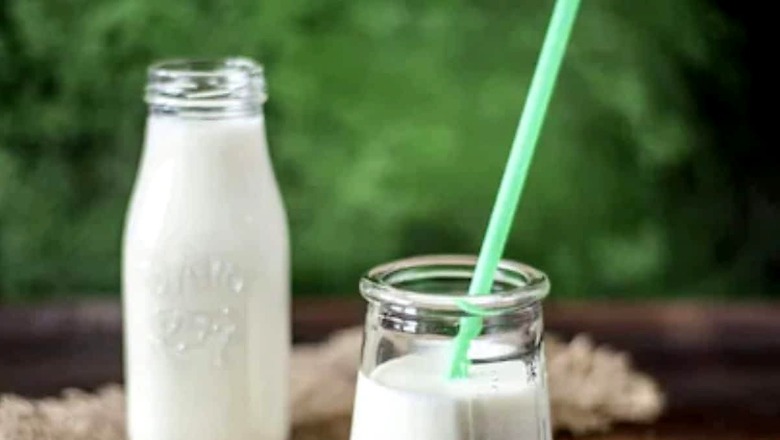
views
The issue of food adulteration is increasing at an alarming rate. Now and then, we come across news of people falling ill from adulterated food. The most common item found in almost every Indian household, milk, can easily be adulterated with harmful agents such as urea, detergents, soap, hydrogen peroxide, starch, sodium hydrogen carbonate and salt, leading to serious health hazards. To tackle the situation, the Food Safety and Standards Authority of India (FSSAI) has come up with some simple ways to check the purity level of our milk.
In a series of videos on X, the FSSAI has shared 4 ways to test the presence of common adulterants such as detergent, maltodextrin, and indicators of increased acidity and abnormal curdling in our milk. So, do the following experiment to find out if milk has been adulterated or not:
Detecting the presence of detergent in milk
Is your milk adulterated with detergent? Here is how you can check it through a simple test. #NoToAdulteration #FSSAI #EatRightIndia #CombatAdulteration #milk@MoHFW_INDIA @PIB_India pic.twitter.com/uBU5VfrDhw— FSSAI (@fssaiindia) July 5, 2024
In the first video, the authority explained how to check if the milk is adulterated with detergent through a simple test.
- Step 1: Take a sample of 5 ml–10 ml milk in two separate containers.
- Step 2: Shake the contents vigorously.
Result: The sample that does not form any bubbles is unadulterated milk, while the one that is adulterated will have bubble formation.
Detecting maltodextrin in milk
Is your milk adulterated with maltodextrin? Here is how you can check it through a simple test.#FSSAI #NoToAduleration #MilkTest #CombatAdulteration #FoodSafety@MoHFW_INDIA @PIB_India pic.twitter.com/iOwJW6c1Oo— FSSAI (@fssaiindia) July 12, 2024
This 45-second video showed how to check if the milk is adulterated with maltodextrin or not. Follow the steps mentioned below and know the difference.
- Step 1: Take a sample of 5 ml milk in a container.
- Step 2: Add 2 ml of iodine reagents to it.
- Step 3: Mix well and observe for the change in colour.
Result: The unadulterated milk will have no colour change and will be slightly yellowish brown in colour, whereas the adulterated milk will appear chocolate-red brown in colour.
FSSAI further mentioned that maltodextrin has six or more glucose units that react with iodine solutions to form complexes of chocolate red brown colour.
Detecting increased acidity in milk
Does your milk have increased acidity? Let’s do a Simple Test … #NoToAdulteration #MilkTesting #EatRightIndia #FoodSafety #FSSAI @MoHFW_INDIA @PIB_India pic.twitter.com/vNdGc7bMlH— FSSAI (@fssaiindia) July 25, 2024
- Step 1: Take a sample of 5 ml milk in a container.
- Step 2: Then, put it in boiling water for 5 minutes.
- Step 3: Remove the container from water without shaking.
Result: The unadulterated milk will have no small or precipitated particles. The adulterated milk, on the other hand, will have precipitated particles or an acidic smell.
Detecting abnormal curdling in milk
Is there an abnormal curdling in your milk? Watch this informative video to learn more. #NoToAdulteration #EatRightIndia #FoodSafety @MoHFW_INDIA #CombatAdulteration pic.twitter.com/f2RenACBJr— FSSAI (@fssaiindia) July 30, 2024
Milk curdling is a natural process often linked with the production of dairy products like yoghurt and cheese. However, if you find any abnormal curdling, it can be a sign of several issues like High Acidity, Contamination, Heat treatment, or Adulteration. So, take milk in a container and check for any abnormal curdling. If there is no abnormal curdling, it means your milk is fresh. If you observe any curdling behaviour when milk is heated, then it can be a general indication of milk adulteration.


















Comments
0 comment